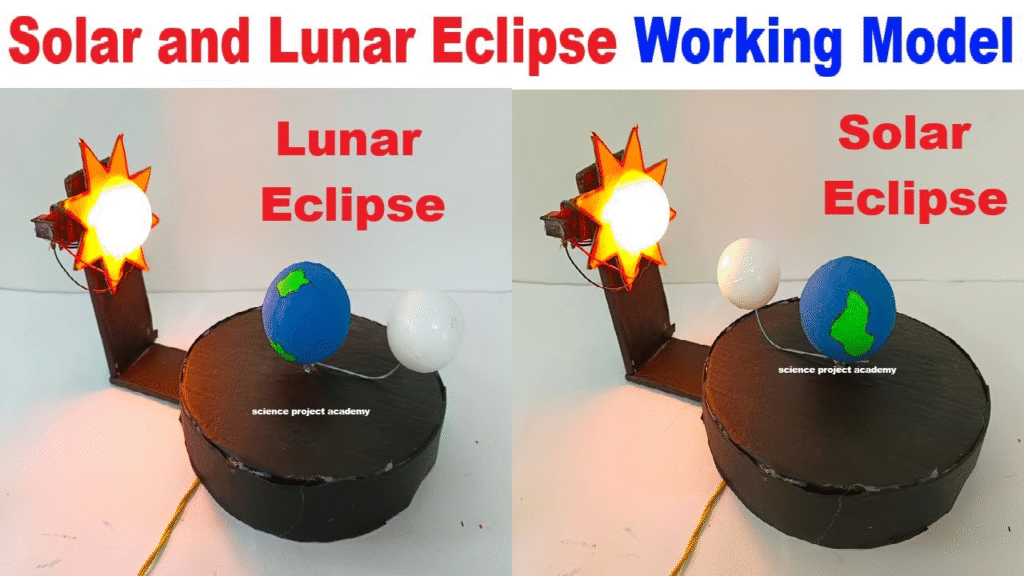Aim / Objective:
To demonstrate the occurrence of solar and lunar eclipses and explain how the positions of the Sun, Earth, and Moon create these phenomena.

Materials Required:
- 3 balls of different sizes (representing the Sun, Earth, and Moon)
- Slow DC motor
- Stand or base to mount the motor and balls
- Wires and battery (for motor)
- Cardboard or wooden sticks (to hold the balls)
- Glue or tape
- Marker/paint (to label the Sun, Earth, Moon)
Working Principle:
- Solar Eclipse: Occurs when the Moon comes between the Sun and the Earth, blocking sunlight partially or fully.
- Lunar Eclipse: Occurs when the Earth comes between the Sun and the Moon, casting its shadow on the Moon.
- The motor slowly rotates the Earth ball around the Sun ball and can move the Moon ball around the Earth to simulate the orbits and alignments that cause eclipses.
Procedure:
- Mount the Sun ball on the base as the stationary center.
- Fix the Earth ball on a stick connected to the slow motor so it can rotate around the Sun.
- Attach the Moon ball on a smaller stick or ring around the Earth so it can revolve around the Earth.
- Connect the motor to a battery to make the Earth rotate around the Sun.
- Adjust the Moon’s position to show:
- Solar Eclipse: Moon comes directly between Sun and Earth.
- Lunar Eclipse: Earth comes directly between Sun and Moon.
- Observe the shadow formations on the balls to visualize the eclipses.
Observation:
- When the Moon is between the Sun and Earth, the Earth experiences a solar eclipse (shadow falls on Earth).
- When the Earth is between the Sun and Moon, the Moon enters Earth’s shadow, showing a lunar eclipse.
- The slow rotation helps students clearly see the alignment of celestial bodies and shadow movements.
Conclusion:
The model effectively demonstrates the mechanism of solar and lunar eclipses.
It helps students understand the relative positions and motion of the Sun, Earth, and Moon, and how these positions cause eclipses that are observable from Earth.

